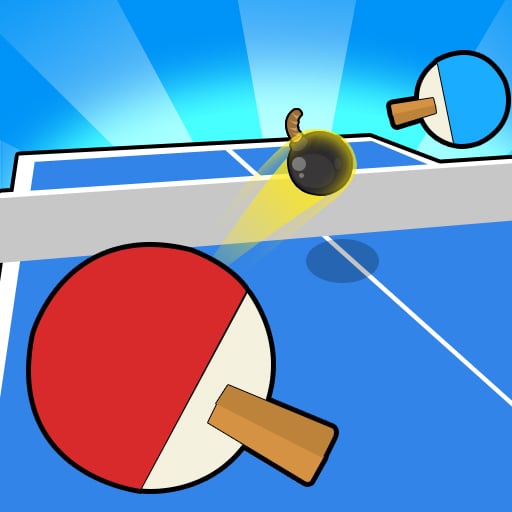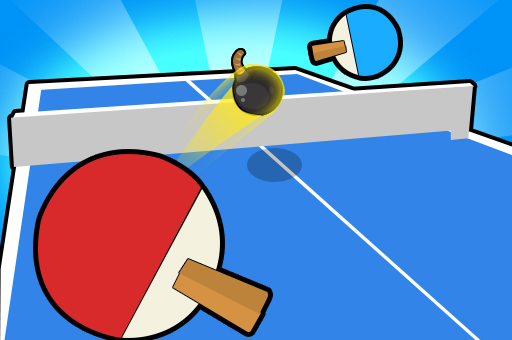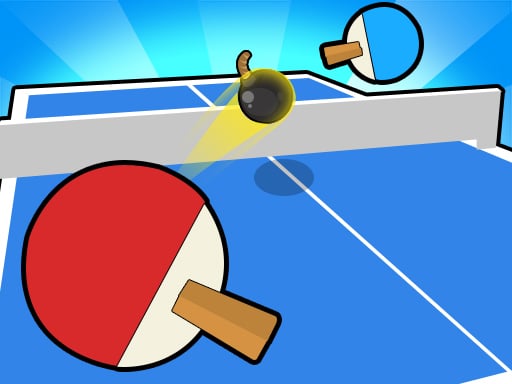
Ping Pong, commonly known as Table Tennis, is a popular indoor sport enjoyed by people of all ages worldwide. Known for its fast-paced rallies, sharp reflexes, and strategic gameplay, Table Tennis is both a recreational activity and a competitive sport at the international level. This guide covers everything you need to know about Ping Pong, from its origins and basic rules to essential techniques and equipment.
The Origins of Ping Pong
Ping Pong began as a social parlor game in England in the late 19th century. It evolved from lawn tennis, as people adapted the game to be played indoors on a table. Early equipment included makeshift paddles made from cigar box lids and balls made of cork. The game gained the name “Ping Pong” due to the sound made by the ball as it bounced back and forth.
In the 1920s, Table Tennis began gaining global recognition, and in 1988, it was officially introduced as an Olympic sport. Today, Table Tennis is governed by the International Table Tennis Federation (ITTF), which oversees the sport’s official rules and regulations.
Basic Rules of Ping Pong
1. The Objective
The main objective of Ping Pong is to score points by hitting the ball over the net in a way that the opponent cannot return it. A match is usually played in a best-of-five or best-of-seven game format, where each game is played to 11 points. To win a game, a player must lead by at least two points.
2. Serving
- The serve must start with the ball resting on an open palm and be tossed at least 6 inches in the air before being struck.
- The ball must first bounce on the server’s side of the table, cross the net, and then bounce on the opponent’s side.
- In singles, players alternate serves every two points until one reaches 11, while in doubles, players also rotate the receiving partner.
3. Scoring
A point is awarded when:
- The opponent fails to return the ball before it bounces twice on their side.
- The ball is hit into the net or off the table without touching the opponent’s side.
- The opponent’s serve or return violates any of the serving or return rules.
4. Winning the Match
Players continue until one player has won the required number of games (usually three out of five or four out of seven). Each game is to 11 points, but a player must win by at least two points.
Essential Ping Pong Equipment
1. Table
The Ping Pong table is 9 feet long, 5 feet wide, and 2.5 feet high. It’s divided by a net that stretches across the center, and each side of the table has a center line for doubles play. The surface of the table is usually dark with white lines, providing clear visibility for the players.
2. Ball
The official Ping Pong ball has a diameter of 40mm and weighs around 2.7 grams. Made from plastic, it’s typically white or orange and marked with stars to indicate quality, with three-star balls being the highest standard for competition.

3. Paddle (or Racket)
The paddle, or racket, has a wooden blade covered with a rubber surface that provides varying levels of grip and control. Each side of the paddle can have different types of rubber, allowing players to adjust spin and speed. Players use different grips, such as the shakehand or penhold grip, depending on personal preference and playing style.
Techniques and Skills in Ping Pong
1. Serving Techniques
A good serve is crucial in Ping Pong. There are several types of serves:
- Topspin Serve: Adds forward spin, causing the ball to dip after crossing the net.
- Backspin Serve: Adds reverse spin, making it difficult for the opponent to return with power.
- Sidespin Serve: Adds lateral spin, which can make the ball curve, confusing the receiver.
2. Types of Strokes
- Forehand Drive: A basic offensive stroke that uses topspin to keep the ball low and fast.
- Backhand Drive: Similar to the forehand, but hit from the backhand side of the body, ideal for countering aggressive shots.
- Loop: An advanced topspin stroke used to apply a lot of spin, making the ball curve as it travels.
- Smash: A powerful shot used to end rallies, often hit when the ball is high enough to attack.
3. Footwork and Positioning
Good footwork is essential for quick movement and positioning. Players use small, quick steps to maintain balance and react quickly to the opponent’s shots. Proper stance, with knees slightly bent and weight on the balls of the feet, allows for faster and more controlled movement across the table.
4. Defensive Techniques
Defensive skills are just as important as offensive ones. Some popular defensive techniques include:
- Block: A quick response to a fast shot, returning the ball with minimal force to keep it on the table.
- Chop: A backspin shot used to neutralize an opponent’s topspin, especially effective for long-distance rallies.
- Push: A soft return that keeps the ball low and slow, often used to control the pace of the game and force errors.
Strategies to Improve Your Game
1. Practice Consistently
Consistent practice is key to mastering Ping Pong. Work on your strokes, footwork, and serves regularly to improve speed, accuracy, and power.

2. Develop a Variety of Serves
Having multiple serve options keeps your opponent guessing and prevents them from adjusting to a single style. Experiment with different spins and speeds to find what works best.
3. Focus on Spin Control
Mastering spin is essential in Ping Pong. Practice putting topspin, backspin, and sidespin on the ball, as spin can affect how the ball behaves on your opponent’s side, giving you an advantage in rallies.
4. Learn to Anticipate Opponent Moves
Pay attention to your opponent’s body language and paddle angle, as these can give clues to their next move. Anticipating shots allows you to position yourself for better returns and to control the pace of the game.
The Health Benefits of Playing Ping Pong
Ping Pong is not just fun—it’s also great for your health! Here’s how:
- Improves Reflexes and Hand-Eye Coordination: The fast pace of the game sharpens reflexes and improves hand-eye coordination, essential skills for many daily activities.
- Enhances Brain Function: The strategic nature of Ping Pong stimulates the brain, improving memory and cognitive function.
- Promotes Physical Fitness: Ping Pong involves constant movement, helping to burn calories, strengthen muscles, and improve cardiovascular health.
- Reduces Stress: Like other physical activities, playing Ping Pong releases endorphins, which can relieve stress and improve mood.
Conclusion: Embrace the Thrill of Ping Pong
Ping Pong is a highly engaging and challenging sport that requires both physical agility and mental strategy. From recreational play with friends to intense competitive matches, Ping Pong offers endless opportunities for improvement and fun. Whether you’re a beginner or an advanced player, the key to success is practice, focus, and enjoyment of the game. Grab a paddle, hit the table, and discover the thrill of this fast-paced, dynamic sport!
Leave a Comment